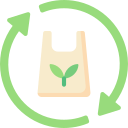Cracking the Blend Problem
Near-infrared spectroscopy, machine vision, and robotics now sort garments by fiber type, color, and construction. A sortation partner shared how color-sorted input reduced dye demand in trials. What sorting specs would give your mill confidence? Comment with your ideal feedstock grades and blend thresholds.
Cracking the Blend Problem
Targeted chemistries selectively dissolve cellulose or depolymerize polyester, freeing each component for high-value use. Early runs show cleaner streams and fewer contaminants, which boosts spinning consistency. If you’ve trialed selective routes, which downstream step—pulping, polymerization, or extrusion—proved most sensitive?
Cracking the Blend Problem
Recovery gets easier when products are designed for it. Mono-material strategies, recyclable sewing threads, and snap-in components simplify future separation. A small studio switched to compatible trims and saw smoother mechanical preprocessing. Subscribe for our checklist to evaluate your next product’s recovery-readiness.





